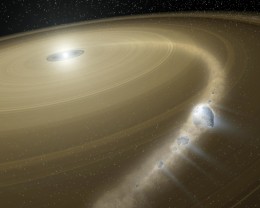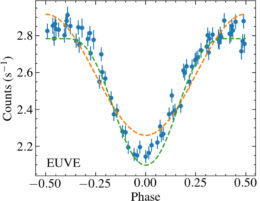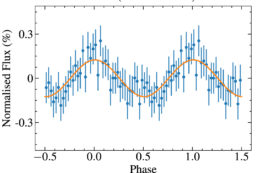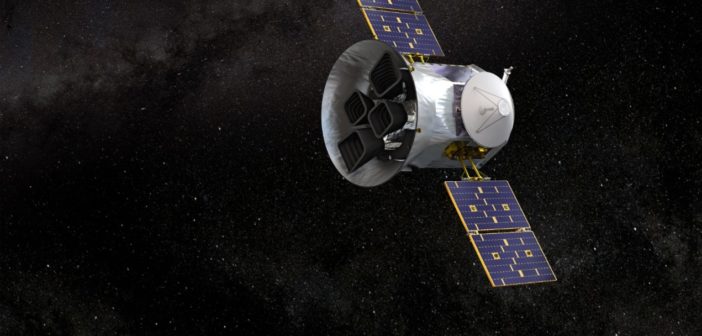This week, scientists are celebrating the recent conclusion of the primary mission for the Transiting Exoplanet Survey Satellite (TESS). On Monday, we talked about TESS’s ongoing contributions to exoplanet science. But what else has this spacecraft been up to? Today we’re exploring its addition to the mystery of a puzzling white dwarf.
Puzzling Pollution

GD 394 was one of the earliest metal-rich white dwarfs discovered, though others with varying explanations have been detected more recently. In the illustration above, a disintegrating planetesimal accretes onto a white dwarf. [NASA/JPL-Caltech]
GD 394 has challenged our expectations for white dwarfs ever since its discovery in the 1960s. A white dwarf — a hot, dense stellar remnant — has such a strong gravitational pull that heavier elements are expected to rapidly sink to the white dwarf’s center, leaving only lightweight hydrogen, helium, and sometimes carbon and oxygen for us to identify in its atmosphere.
But early observations of GD 394 revealed an object unexpectedly polluted with heavier metals like silicon and iron in its atmosphere. To explain this, GD 394 would need to be actively and continuously accreting fresh, metal-rich material from some external source that we couldn’t detect.

This phase-folded EUV light curve — constructed from observations of GD 394 in the mid-1990s made with the Extreme Ultraviolet Explorer satellite — show the strong dip in EUV flux over a 1.15-day period. [Adapted from Wilson et al. 2020]
An Unsteady Source
But GD 394’s metals were only part of its mystery. In the mid-1990s, observations showed that this white dwarf’s extreme ultraviolet (EUV) emission wasn’t steady — it varied in intensity by about 25% with a rapid period of about 1.15 days.
What could cause this variability? The answer remains unclear, as efforts to test various hypotheses have all come up short. A recent study of Hubble observations of GD 394, for instance, found the star’s far-ultraviolet light curve to be steady to within 1%. Had the variability’s source vanished in the last several decades? Or is the variability caused only in EUV light, and not at longer wavelengths?
In a recent publication, scientist David Wilson (McDonald Observatory, University of Texas at Austin) and collaborators now have presented new TESS observations at optical wavelengths that have further deepened the mystery of GD 394.
More Clues, But No Answers Yet

The TESS light curve for GD 394, folded onto the fitted period, shows the subtle sinusoidal variability at optical wavelengths. [Adapted from Wilson et al. 2020]
So what’s causing the long-lived variation of this star? Leading theories that could fit both sets of observations include metal spots caused by channeled accretion, occultation by an outflow from an orbiting (but not transiting) planet, and a magnetically induced hot spot.
Future simultaneous observing with an EUV telescope and a sensitive optical observatory like TESS could help us to differentiate between these models. In the meantime, TESS has cheerfully begun its extended mission — hunting for more planets, characterizing more stars, and exploring more cosmic mysteries.
Citation
“Optical Detection of the 1.1 day Variability at the White Dwarf GD 394 with TESS,” David J. Wilson et al 2020 ApJL 897 L31. doi:10.3847/2041-8213/ab9d7b

2 Comments
Pingback: Pogłębiająca się tajemnica białego karła GD 394 – PTMA Kraków
Pingback: Pogłębiająca się tajemnica białego karła GD 394 – Astronomia Śląska